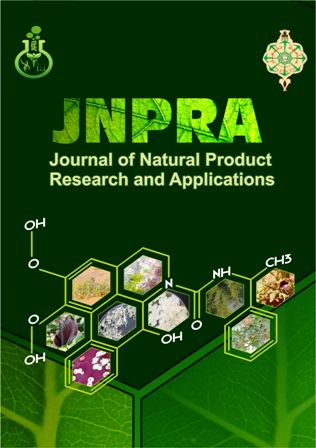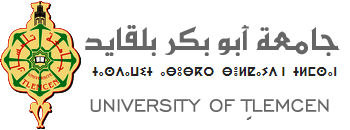Profiling of Minerals in Lemon Savory (Satureja biflora) Traditionally used in the Management of Chronic Wounds
Selected minerals in Satureja biflora
DOI:
https://doi.org/10.46325/jnpra.v2i1.35Keywords:
Chronic wounds, Minerals, Satureja bifloraAbstract
Effective and faster treatment of wounds remains a big challenge facing healthcare professionals and global economies. Diabetic foot ulcers, for example, affect about 15% of all people with diabetes during their lifetime. These ulcers do not respond to conventional therapies, therefore, presenting a high risk for patients such as foot amputation in 85% of the predisposed patients. In addition, the available wound dressing materials are unable to fully address microbial infection, protein adsorption, and elevated amounts of exudates. Although medicinal plants, including lemon savory, have been used by communities worldwide to manage chronic wounds, little data is available especially on the role of metals in topically used formulations. Minerals have demonstrated biocompatibility, capacity to improve cellular processes, and adhesion. The objective of this study was to determine the concentration of manganese, copper, zinc, magnesium, and iron metals in Satureja biflora species, which have been found crucial in wound healing. The leaves of the plant have been used by local Kenyan communities to manage chronic wounds. The plant material was collected from Dondori, Nakuru County, Kenya. The material was then dried and ground into a coarse powder. Upon acid digestion, concentrations of metals of interest were determined using AAS technique. The results indicated that aerial parts of Satureja biflora contain significant quantities of selected metals. Leaves had highest iron concentration (927.49 ± 1.79 ppm) while stems had the lowest magnesium concentration (71.64 ± 0.38 ppm). More studies involving other techniques should be carried out to validate this data for biomimicry applications.
References
Ali, A., Garg, P., Goyal, R., Kaur, G., Li, X., Negi, P., Valis, M., Kuca, K., & Kulshrestha, S. (2020). A Novel Herbal Hydrogel Formulation of Moringa oleifera for Wound Healing. Plants (Basel), 10(1). https://doi.org/10.3390/plants10010025
Aminah, N. S., Tun, K. N. W., Kristanti, A. N., Aung, H. T., Takaya, Y., & Choudhary, M. I. (2021). Chemical constituents and their biological activities from Taunggyi (Shan state) medicinal plants. Heliyon, 7(2), e06173. https://doi.org/10.1016/j.heliyon.2021.e06173
Anal, J. M. H., & Chase, P. (2016). Trace elements analysis in some medicinal plants using graphite furnace-atomic absorption spectroscopy. Environmental Engineering Research, 21, 247-255.
Barchitta, M., Maugeri, A., Favara, G., Magnano San Lio, R., Evola, G., Agodi, A., & Basile, G. (2019). Nutrition and Wound Healing: An Overview Focusing on the Beneficial Effects of Curcumin. Int J Mol Sci, 20(5). https://doi.org/10.3390/ijms20051119
Borkow, G. (2014). Using Copper to Improve the Well-Being of the Skin. Current Chemical Biology, 8(2), 89-102. https://doi.org/10.2174/2212796809666150227223857
Burns, J., & Pieper, B. (2000). HIV/AIDS: impact on healing. Ostomy/wound management, 46(3), 30-40, 42, 44 passim; quiz 48-39. http://europepmc.org/abstract/MED/10788917
Carter, M. J., Tingley-Kelley, K., & Warriner, R. A., 3rd. (2010). Silver treatments and silver-impregnated dressings for the healing of leg wounds and ulcers: a systematic review and meta-analysis. J Am Acad Dermatol, 63(4), 668-679. https://doi.org/10.1016/j.jaad.2009.09.007
Coger, V., Million, N., Rehbock, C., Sures, B., Nachev, M., Barcikowski, S., Wistuba, N., Strauß, S., & Vogt, P. M. (2019). Tissue Concentrations of Zinc, Iron, Copper, and Magnesium During the Phases of Full Thickness Wound Healing in a Rodent Model. Biol Trace Elem Res, 191(1), 167-176. https://doi.org/10.1007/s12011-018-1600-y
Ding, H. Y., Chou, T. H., Lin, R. J., Chan, L. P., Wang, G. H., & Liang, C. H. (2011). Antioxidant and antimelanogenic behaviors of Paeonia suffruticosa. Plant Foods Hum Nutr, 66(3), 275-284. https://doi.org/10.1007/s11130-011-0235-3
Ge, Z. (2012). Biomimicry in biomedical research. Organogenesis, 8(4), 101-102. https://doi.org/10.4161/org.23395 , note = PMID: 23275257
Ghaly, P., Iliopoulos, J., & Ahmad, M. (2021). The role of nutrition in wound healing: an overview. British Journal of Nursing, 30(5), S38-S42. https://doi.org/10.12968/bjon.2021.30.5.S38
Goldblum, R. W., Derby, S., & Lerner, A. B. (1953). The metal content of skin, nails and hair. J Invest Dermatol, 20(1), 13-18. https://doi.org/10.1038/jid.1953.3
Guest, J. F., Ayoub, N., McIlwraith, T., Uchegbu, I., Gerrish, A., Weidlich, D., Vowden, K., & Vowden, P. (2015). Health economic burden that wounds impose on the National Health Service in the UK. BMJ Open, 5(12), e009283. https://doi.org/10.1136/bmjopen-2015-009283
Han, G., & Ceilley, R. (2017). Chronic Wound Healing: A Review of Current Management and Treatments. Adv Ther, 34(3), 599-610. https://doi.org/10.1007/s12325-017-0478-y
Heni, W., Zejun, X., Qing, L., & Jun, W. (2021). Application of metal-based biomaterials in wound repair. Engineered Regeneration, 2, 137-153. https://doi.org/https://doi.org/10.1016/j.engreg.2021.09.005
Ivask, A., George, S., Bondarenko, O., & Kahru, A. (2012). Metal-Containing Nano-Antimicrobials: Differentiating the Impact of Solubilized Metals and Particles. In N. Cioffi & M. Rai (Eds.), Nano-Antimicrobials: Progress and Prospects (pp. 253-290). Springer Berlin Heidelberg. https://doi.org/10.1007/978-3-642-24428-5_9
Kennedy, E., Fecheyr-Lippens, D., Hsiung, B.-K., Niewiarowski, P. H., & Kolodziej, M. (2015). Biomimicry: A Path to Sustainable Innovation. Design Issues, 31(3), 66-73. https://doi.org/10.1162/DESI_a_00339
Khan, S. (2010). Determination of major and trace elements in ten important folk therapeutic plants of Haripur basin, Pakistan. . J. Med. Plants Res., 4(7), 559-566. http://www.academicjournals.org/JMPR
Khansa, I., Schoenbrunner, A. R., Kraft, C. T., & Janis, J. E. (2019). Silver in Wound Care—Friend or Foe?: A Comprehensive Review. 7(8), e2390. https://doi.org/10.1097/gox.0000000000002390
Kucisec-Tepes, N. (2016). [THE ROLE OF ANTISEPTICS AND STRATEGY OF BIOFILM REMOVAL IN CHRONIC WOUND]. Acta Med Croatica, 70(1), 33-42. (Uloga antiseptika i strategija uklanjanja biofilma kronicne rane.)
Lagalante, A. F. (2004). Atomic Absorption Spectroscopy: A Tutorial Review. Applied Spectroscopy Reviews, 34(3), 173-189. https://doi.org/10.1081/ASR-100100844
Lansdown, A. B. G. (2002). Calcium: a potential central regulator in wound healing in the skin. Wound Repair and Regeneration, 10(5), 271-285. https://doi.org/https://doi.org/10.1046/j.1524-475X.2002.10502.x
Leaper, D. (2011). Topical antiseptics in wound care: time for reflection. Int Wound J, 8(6), 547-549. https://doi.org/10.1111/j.1742-481X.2011.00872.x
Leaper, D., Assadian, O., & Edmiston, C. E. (2015). Approach to chronic wound infections. Br J Dermatol, 173(2), 351-358. https://doi.org/10.1111/bjd.13677
Lin, P. H., Sermersheim, M., Li, H., Lee, P. H. U., Steinberg, S. M., & Ma, J. (2017). Zinc in Wound Healing Modulation. Nutrients, 10(1). https://doi.org/10.3390/nu10010016
Low, W. L., Kenward, K., Britland, S. T., Amin, M. C., & Martin, C. (2017). Essential oils and metal ions as alternative antimicrobial agents: a focus on tea tree oil and silver. Int Wound J, 14(2), 369-384. https://doi.org/10.1111/iwj.12611
Matasyoh, J. C., Kiplimo, J. J., Karubiu, N. M., & Hailstorks, T. P. (2007). Chemical Composition and Antimicrobial Activity of the Essential Oil of Satureja biflora (Lamiaceae). Bulletin of the Cheical Society of Ethiopia, 21(2), 249-254. https://doi.org/10.4314/bcse.v21i2.21204
Matter, M. T., Probst, S., Läuchli, S., & Herrmann, I. K. (2020). Uniting Drug and Delivery: Metal Oxide Hybrid Nanotherapeutics for Skin Wound Care. Pharmaceutics, 12(8). https://doi.org/10.3390/pharmaceutics12080780
Mohammadpour, M., Behjati, M., Sadeghi, A., & Fassihi, A. (2013). Wound healing by topical application of antioxidant iron chelators: kojic acid and deferiprone. Int Wound J, 10(3), 260-264. https://doi.org/10.1111/j.1742-481X.2012.00971.x
Mohd, S., & Iqbal, A. (2019). Chapter 1 - Herbal Medicine: Current Trends and Future Prospects. In S. Mohd, A. Iqbal, & C. Debprasad (Eds.), New Look to Phytomedicine (pp. 3-13). Academic Press. https://doi.org/https://doi.org/10.1016/B978-0-12-814619-4.00001-X
Momo, H. A. J., & Petevino, C. (2016). Trace elements analysis in some medicinal plants using graphite furnace-atomic absorption spectroscopy. Environmental Engineering Research, 21(3), 247-255. https://doi.org/10.4491/eer.2016.007
Nussbaum, S. R., Carter, M. J., Fife, C. E., DaVanzo, J., Haught, R., Nusgart, M., & Cartwright, D. (2018). An Economic Evaluation of the Impact, Cost, and Medicare Policy Implications of Chronic Nonhealing Wounds. Value in Health, 21(1), 27-32. https://doi.org/https://doi.org/10.1016/j.jval.2017.07.007
O'Connor, S., & Murphy, S. (2014). Chronic venous leg ulcers: is topical zinc the answer? A review of the literature. Adv Skin Wound Care, 27(1), 35-44; quiz 45-36. https://doi.org/10.1097/01.Asw.0000439173.79541.96
Olowu, R. A., Adewuyi, G. O., Onipede, O. J., Lawal, O. A., & Sunday, O. M. (2015). Concentration of Heavy Metals in Root, Stem and Leaves of Acalypha indica and Panicum maximum jacq from Three Major Dumpsites in Ibadan Metropolis, South West Nigeria. American Journal of Chemistry, 5(1), 40-48. https://doi.org/doi:10.5923/j.chemistry.20150501.06
Ongarora, B. G. (2022). Recent technological advances in the management of chronic wounds: A literature review. Health Science Reports, 5(3), e641. https://doi.org/https://doi.org/10.1002/hsr2.641
Papadopoulos, A., Assimomytis, N., & Varvaresou, A. (2022). Sample Preparation of Cosmetic Products for the Determination of Heavy Metals. Cosmetics, 9(1), 21. https://www.mdpi.com/2079-9284/9/1/21
Park, E. K., Rhee, H. I., Jung, H. S., Ju, S. M., Lee, Y. A., Lee, S. H., Hong, S. J., Yang, H. I., Yoo, M. C., & Kim, K. S. (2007). Antiinflammatory effects of a combined herbal preparation (RAH13) of Phellodendron amurense and Coptis chinensis in animal models of inflammation. Phytother Res, 21(8), 746-750. https://doi.org/10.1002/ptr.2156
Preetha, P. S., & Kartha, A. J. (2021). Elemental analysis of Andrographis echioides (L.) Nees. leaves, a potential pharmaceutical plant using atomic absorption spectroscopy (AAS). Asian Journal of Pharmaceutical Research and Development, 9(3), 43-47. https://doi.org/https://doi.org/10.22270/ajprd.v9i3.974
Puig, S., Ramos-Alonso, L., Romero, A. M., & Martínez-Pastor, M. T. (2017). The elemental role of iron in DNA synthesis and repair. Metallomics, 9(11), 1483-1500. https://doi.org/10.1039/c7mt00116a
Rauof, A. L. M., Hammud, K. K., Zanad, D. E., AliHussein, A., & Aboob, R. M. (2015). Effects of storage time-conditions and sample preparations on determinationof heavy metals in three medicinal herbs by atomic absorption analysis. Advances in Applied Science Research, 6(7), 105-111. https://www.pelagiaresearchlibrary.com
Razzaghi, R., Pidar, F., Momen-Heravi, M., Bahmani, F., Akbari, H., & Asemi, Z. (2018). Magnesium Supplementation and the Effects on Wound Healing and Metabolic Status in Patients with Diabetic Foot Ulcer: a Randomized, Double-Blind, Placebo-Controlled Trial. Biol Trace Elem Res, 181(2), 207-215. https://doi.org/10.1007/s12011-017-1056-5
Roberts, C. D., Leaper, D. J., & Assadian, O. (2017). The Role of Topical Antiseptic Agents Within Antimicrobial Stewardship Strategies for Prevention and Treatment of Surgical Site and Chronic Open Wound Infection. Advances in wound care, 6(2), 63-71. https://doi.org/10.1089/wound.2016.0701
Rodloff, A., Bauer, T., Ewig, S., Kujath, P., & Müller, E. (2008). Susceptible, intermediate, and resistant - the intensity of antibiotic action. Dtsch Arztebl Int, 105(39), 657-662. https://doi.org/10.3238/arztebl.2008.0657
Salvo, J., & Sandoval, C. (2022). Role of copper nanoparticles in wound healing for chronic wounds: literature review. Burns & Trauma, 10. https://doi.org/10.1093/burnst/tkab047
Santamaria, N., Carville, K., & Prentice, J. (2009). Woundswest: Identifying the prevalence of wounds within western Australia's public health system. EWMA Journal, 9(3).
Sen, C. K., Khanna, S., Venojarvi, M., Trikha, P., Ellison, E. C., Hunt, T. K., & Roy, S. (2002). Copper-induced vascular endothelial growth factor expression and wound healing. Am J Physiol Heart Circ Physiol, 282(5), H1821-1827. https://doi.org/10.1152/ajpheart.01015.2001
Stechmiller, J. K. (2010). Understanding the role of nutrition and wound healing. Nutr Clin Pract, 25(1), 61-68. https://doi.org/10.1177/0884533609358997
Wang, P.-H., Huang, B.-S., Horng, H.-C., Yeh, C.-C., & Chen, Y.-J. (2018). Wound healing. Journal of the Chinese Medical Association, 81(2), 94-101. https://doi.org/10.1016/j.jcma.2017.11.002
Wright, J. A., Richards, T., & Srai, S. K. (2014). The role of iron in the skin and cutaneous wound healing. Front Pharmacol, 5, 156. https://doi.org/10.3389/fphar.2014.00156
Wu, Y., Li, J. Q., Kim, Y. J., Wu, J., Wang, Q., & Hao, Y. (2011). In vivo and in vitro antiviral effects of berberine on influenza virus. Chin J Integr Med, 17(6), 444-452. https://doi.org/10.1007/s11655-011-0640-3
Downloads
Published
How to Cite
Issue
Section
License

This work is licensed under a Creative Commons Attribution-NonCommercial 4.0 International License.






